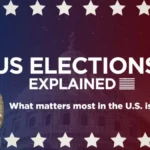In the second episode of US Elections Explained, Euronews politics editor Stefan Grobe looks into the dynamics of voter turnout and how it could affect the final result come election night.
I’m Stefan Grobe, former Washington correspondent, and I have covered US elections for Euronews since 1996. The 2024 race is less than a week away and both candidates are making their final arguments before the big day.
What matters most in the United States is turnout. That sounds like a truism, but it’s crucial in a country where many people sit an election out. The turnout record in the US was established four years ago, when Joe Biden beat Donald Trump. More than 66 percent of the voting population went to the polls. Huge for America, but almost pitiful for Europe!
Typically, presidential elections in the US generate a turnout between 55 and 60 per cent. Prior records were established in 1960 (63.8%) when Kennedy beat Nixon, 1964 (62.8%) when Johnson beat Goldwater and in 1952 (62.3) when Eisenhower beat Stevenson. In 2008, when Obama beat McCain, the turnout was 61.6 per cent.
So, what does the candidates need to do? Bring out the vote and get as many people as possible off the couch, those who would otherwise sit the election out.
How do the candidates do that? By communicating to voters though the media. And here the 2024 campaign is a first: Never before have podcasts played an outsize role – and traditional media lost influence.











